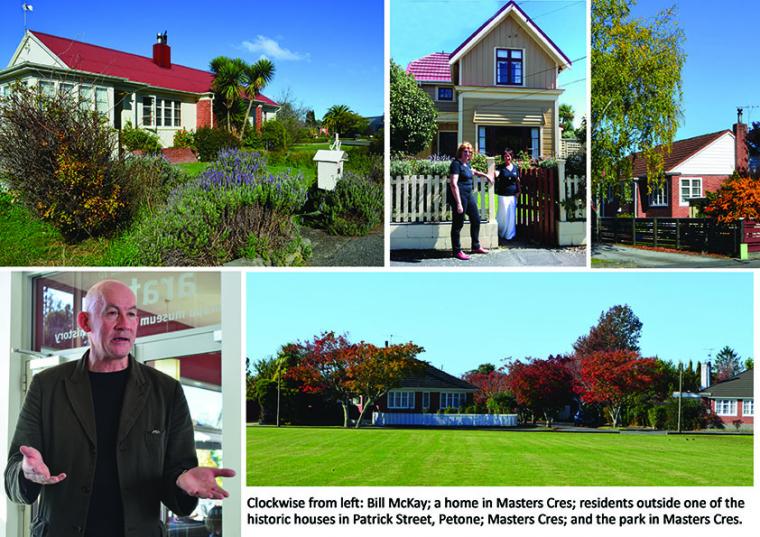It was a beautiful autumn morning as I strolled along Masters Crescent, just off Cornwall Rd, ahead of a talk by Bill McKay, co-author of ‘Beyond the State – NZ State Houses from Modest to Modern’.
The street is mentioned in the current ‘Masterton Modern’ exhibition at Aratoi - a local example of a street planned and built in 1938 along ‘Garden Suburb’ lines. This was a concept that emerged in the 1890s in the UK, and was very influential in the evolution of the New Zealand ‘state house’ design from the 1900s onwards, as McKay told us later that day.
As I walked along, I wondered how much people’s basic housing needs have really changed since the 1940s, the 1900s, the 1880s....we might aspire to bigger, flashier homes today, but the Masters Crescent dwellings surely still tick many of the important boxes.
Built from solid, high quality materials, they are varied and individual in design and oriented for the sun – an innovation that dates to the late 1930s. The sections are large enough to provide food and relaxation but still manageable. The street is curved, the idea being that this stops though traffic (compared to the grid layout), as well as being more attractive. There is a park, and many well-established shrubs and trees along the way.
Premier Richard Seddon travelled to the UK to see the realization of this concept: the Garden City of Letchworth, Hertfordshire. He must have been impressed as his ideas fed into the 1905 Workers Dwellings Act which saw a nationwide plan rolled out to provide 5,000 architect- designed affordable homes for families. The best remaining examples of these are in Patrick St, Petone, still standing strong over 100 years later and showing the English Garden City Cottage style popular at the time.
These groundbreaking first state houses were a far cry from the monotonous high density, poor quality housing that came to be associated with ‘state housing’. ‘Railway houses’ were another manifestation of the NZ ‘state house’, and sixteen thousand were built by the Railways Department.
The early ‘Garden Suburb’ planners in England recognized that we need sun, green space and nature for wellbeing, even believing these would cure ‘inebriates’ and those with mental illness, which led to many asylums being moved out of the central cities.
Healthy communities also needed to be well connected to the cities through public transport and required their own community halls, recreational facilities, economic hubs and public spaces. Unfortunately, these ideals were not widely implemented in New Zealand, due to lack of resources and also a piecemeal attitude to bold plans which McKay says is characteristic here.
Spiking property prices and housing shortages in the main centres are not in fact new problems. As Bill McKay explained, slum housing in cities was identified as an issue as early as the 1880s, and “there has always been a housing shortage in New Zealand, ever since the 1840s”. His book was a finalist in last year’s NZ Post Book Awards and is a fascinating history of this branch of our architectural history.
Exhibitions at Aratoi: Masterton Modern, until 31 May; Elements Exhibition: NZ Potters Inc, until 21 June.
